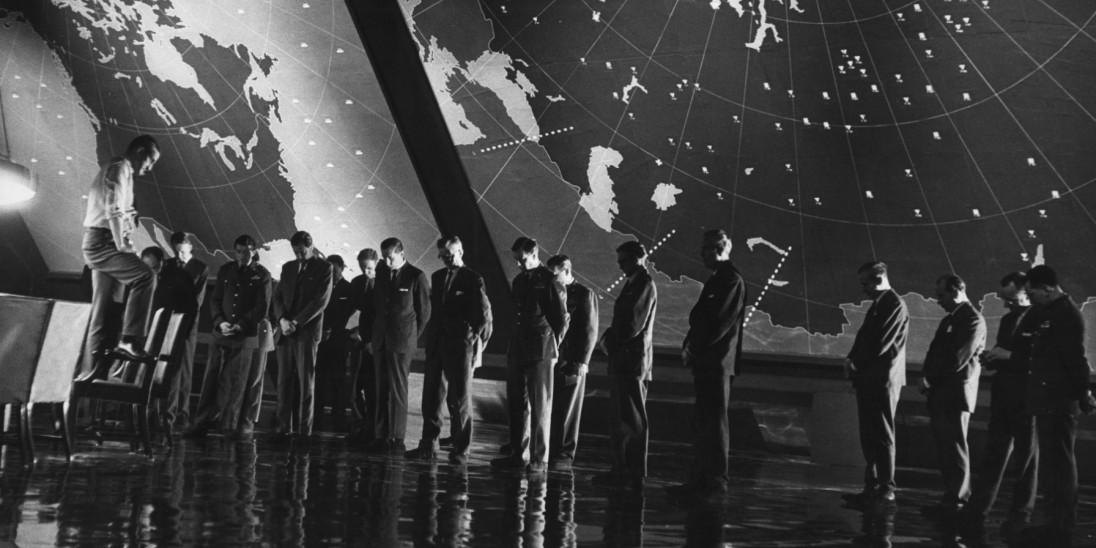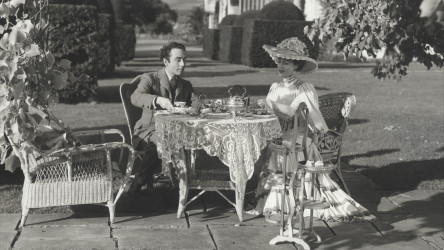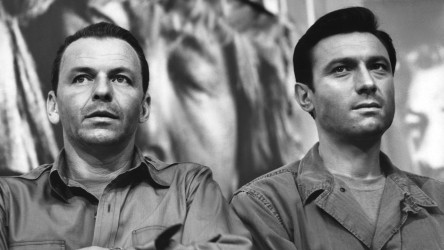Dr. Strangelove(1963)
When America accidentally launches a nuclear attack on Russia, it's up to a bemused British airman to save the day.
Certificate
Age group12+ years
Duration93 mins


Dr. Strangelove or: How I Learned to Stop Worrying and Love the Bomb (1964) is a prime example of the perhaps controversial idea of challenging a serious topic and turning it into a classic surreal comedy. The portrayal of characters is sufficiently real but uses a sense of dark humour to conceivably criticize them for the entertainment of people in the mid-1960s, and similarly during the fifty years since its release.
Directed, produced and co-written by Stanley Cubrick, Dr. Strangelove is a film that depicts what would happen if the wrong person pushed the wrong button; a U.S. Air Force General going mad, a bomber wing sent to destroy the U.S.S.R, and the exploration and exploitation of a communist community during the Cold War.
With $9.4 million received at box office, Kubrick’s radical release displays how the dark film uses three different types of camera styles to distinguish the three main set locations, including the use of cinema verite and documentary. Dr. Strangelove was rightly nominated for four Academy Awards, from Best Picture to Best Adapted Screenplay, though losing to My Fair Lady (1964). Based on Peter George’s novel Red Alert, the film shows the anticlimactic moment we meet Dr. Strangelove himself, though it was written in by Kubrick and his co-screenwriter Southern. Are the novel readers missing out, or was it just included to add a conclusive sense of achievement and end?
The 1964 film was such surreal comedy, the production company, Columbia Pictures, had to include a disclaimer at the exposition, reading along the lines of, “none of the characters portrayed in this film are meant to represent any real persons living or dead.” Furthermore, the controversy caused upon its release can only be imagined by an audience of today.
Peter Sellers’ number of performances are what makes Dr. Strangelove so memorable. Nominated for several Oscars, Sellers plays three masterful roles: Mr. Merkin Muffley, a President of the US, Group Captain Lionel Mandrake, a British Exchange Programme liaison, and Dr. Strangelove himself, a wheel-chair bound German scientist. Though these characters are similar to the representations of real-life authoritative persons, they are completely criticized for the audience’s humour, resulting in none of them appearing to do their jobs correctly. If it wasn’t going to cause offence and accusations, why would there be a disclaimer claiming that the characters were most or entirely fictional?
Watching the film today, the similar serious topics of the current world in a Trump era can be soothed and forgotten briefly by the satirical effect that Dr. Strangelove provides, making it a relevant piece of cinema still. And then we remember that none of the characters are real, and the narrative is fictional, but the dramatic elements make it seem that much more genuine and thus applying a preferred reading for the audience.
Definitely for the likes of adults and older teens, Dr. Strangelove has Sellers' black humour that is somewhat acquired, therefore probably not recommended for children, unless they're experts in the Kubrick series and/or enjoy classic cinema and understand, which I'm not certain everyone would.
Print this review
A black British comedy about an ambitious young man who embarks on a series of murders to secure a title and a family fortune.
Certificate

Given bravery medals for his Korean War service, a soldier returns home, but may not be all that he seems, as his platoon questions his heroism.
Certificate